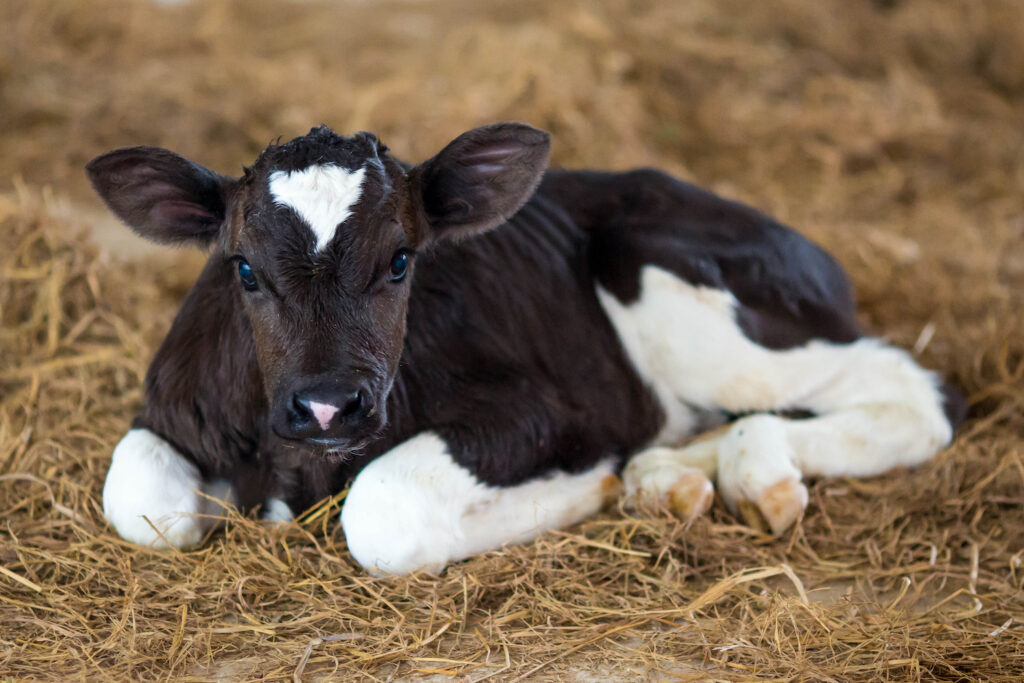Your calving questions answered
24th December 2020
With calving season approaching, large animal vet Katy Peats at Penbode Farm Vets, answers questions on nutrition and common calving pitfalls.

In the first of a three-part calving series, vet Katy Peats explains the importance of managing nutrition and avoiding the pitfalls of premature or badly administered intervention during calving.
What are the key nutritional requirements?
Managing nutrition in the dry, transitional and post-calving cow is critical for managing metabolic disease, abomasal disorders and post-calving productivity.
We can use body condition scoring at drying off, calving and serving to assess the transition cow diet at herd level and evaluate if the balance between economic feeding and production has been met. It is also a cheap and fast way to estimate the energy reserves of the individual cow. BCS works on a scale of 1-5 (1= extremely thin, 5 = obese). The target score 7-8 weeks pre-calving is 2.5-3 out of 5. A cow at this score has visible hips, but with some fat over the hooks and pins and the decreased visibility of the spine.
This ensures cows are ‘fit not fat’ and gives time for thinner cows to be supplemented before the crucial point of calving. Thin cows have an extended calving to conception interval. They may appear to have returned to cyclicity and cleaned up post-calving but they may be suffering from cytological endometritis, whereby the lining of the uterus hasn’t recovered enough to host a pregnancy. Over conditioned cows should have alterations made to their diet in late lactation as weight loss during the dry period can increase the likelihood of a difficult calving. Complications can arise with over conditioned animals which are more likely to have difficult births due to reduced space in the pelvic canal, more likely to develop nutritional disorders post-calving (including ketosis, milk fever, mastitis and lameness) and will take longer to get back in calf.
Changes to the diet should be made slowly over a two-week period before calving to allow the rumen to adapt to the milking cow diet. This should help to maintain intake post-calving.
Nutritional status of dairy cows can be monitored through blood sampling. Cows that are using more energy than they are taking in, go into a state of negative energy balance (NEB). In this state, fat reserves are broken down to provide energy, BHB (a type of ketone) and NEFAs (a type of fatty acid) are also produced. We can measure levels of BHBs and NEFAs to assess the extent of fat mobilisation and therefore energy balance. Seven cows from the close-up and fresh groups should be tested in the morning before feeding to evaluate NEFA levels. Proteins and trace elements can also be assessed through blood sampling.

Large animal vet Katy Peats, Penbode Farm Vets.
What are some of the most common pitfalls at calving?
Cows that calve easily on their own without intervention will generally be healthy and recover well. It is therefore important not to intervene too early in the process. Premature or badly administered intervention can damage the uterus and decreases its ability to contract, consequently decreasing the ability of the cow to cleanse herself and increasing the risk of infection. Infection can also be introduced through unhygenic assistance.
If a cow is calving, isolate her and make a record of the time. Examine the cow internally if after two hours of the waterbag appearing, there are no feet visible or you have any doubts. The cow may require assistance if the calf is malpositioned or if she continues to push but the calf has not progressed after 30 minutes.
It should take a cow 1-4 hours to calve from first appearance of the waterbag and a heifer two to six hours. Always call your vet for assistance if you have any doubts.
Once a calf is born, always check to see if another one is coming, twins, triplets or even on very rare occasions quads can come as a surprise.
Never use excessive force when trying to assist a calving. If the calf will not progress it is for a reason! Either there is foeto-maternal misproportion, the calf is in the wrong position or in the case of twins, two may be trying to come at once. All of these problems should be addressed individually without trying to make use of excessive force. Calving aids should be used by trained individuals to help assist the delivery of a normally positioned calf. The potential force applied to a calving aid is up to that of six people and so force must be applied in a safe and controlled manor to prevent harm to both the cow and the calf. Importantly, only pull when she pushes!
Key equipment needed at calving:
- Gloves – protect yourself, the calf and the cow
- Lube – lots of lube is essential to aid in calving
- Clean and disinfected calving ropes
- A clean and disinfected head rope
- A clean and disinfected calving aid
- Disinfectant
- Buckets – to keep yourself and the cow clean to prevent contamination of the uterus and to get her a drink when she’s finished
- Strong veterinary iodine for navels
- Sterile needles and syringes
- Thermometer
- Medicines as directed by the vet: anti-inflammatory drugs, antibiotics and calcium borogluconate solution.
Look out for the rest of our calving series, including top health concerns to be aware of and how to maximise profitability.
